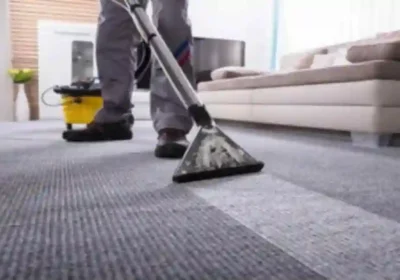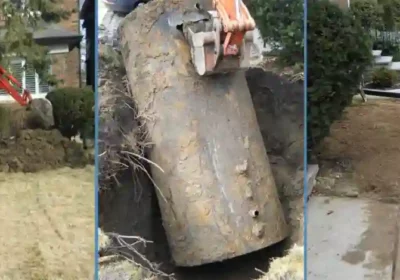DIY Septic Tank Pumping Risks: When to Call in the Professionals
Homeownership comes with various responsibilities, and for those with septic systems, one crucial task is septic tank maintenance. While some homeowners may consider do-it-yourself (DIY) septic tank pumping to save money, it’s essential to understand the associated risks and challenges. In this article, we will explore the potential hazards of DIY septic tank pumping and when it’s best to call in the professionals to ensure a safe and effective process.
The Complexity of Septic Systems
Septic systems are intricate wastewater treatment systems that require careful maintenance to function correctly. Understanding the complexity of these systems is essential before attempting any DIY maintenance, including septic tank pumping. A typical septic system consists of three primary components:
- Septic Tank: A watertight underground container that collects and temporarily holds household wastewater. Inside the tank, solids settle to the bottom, forming a layer of sludge, while lighter materials like grease float to the top, creating a scum layer.
- Drainfield (Leach Field): After leaving the septic tank, the liquid effluent flows into the drainfield, which consists of a network of perforated pipes or chambers buried in soil. The effluent undergoes further treatment as it percolates through the soil.
- Soil: Soil in the drainfield acts as a natural filter and treatment medium, removing impurities and pathogens from the effluent before it re-enters the groundwater.
The DIY Septic Tank Pumping Challenge
Pumping the septic tank is a vital part of septic system maintenance, as it removes accumulated solids and prevents issues like backups and drainfield clogs. However, DIY septic tank pumping poses several significant challenges and risks:
Safety Concerns:
-
- Working around septic tanks can be dangerous. Gases, such as methane and hydrogen sulfide, can be present in high concentrations, posing a risk of suffocation or explosion. Additionally, the confined space inside a septic tank can be hazardous.
Exposure to Contaminants:
-
- Septic tank contents are not only unpleasant but also potentially hazardous. Contact with untreated sewage can lead to the transmission of pathogens, bacteria, and diseases. DIY pumping increases the risk of exposure.
Inadequate Equipment:
-
- DIYers may lack the specialized equipment needed for septic tank pumping, such as vacuum trucks or pumps. Inadequate equipment can result in incomplete or inefficient pumping, leaving behind solids and risking system issues.
Improper Waste Disposal:
-
- Proper disposal of septic tank waste is crucial for environmental and legal reasons. DIYers may not have access to licensed treatment facilities for proper disposal, potentially leading to environmental violations.
Lack of Expertise:
-
- Septic tank pumping requires knowledge and experience to ensure that the tank is emptied thoroughly and without causing damage. DIYers may not have the expertise to assess the condition of the tank and its components.
Legal Compliance:
-
- In many regions, septic tank pumping is subject to regulations and permitting. Attempting DIY pumping without the necessary permits can result in legal consequences and fines.
When to Call in the Professionals
Given the risks and challenges associated with DIY septic tank pumping, it’s advisable to call in the professionals for this critical maintenance task. Here are some scenarios and considerations that indicate when professional assistance is warranted:
Regular Maintenance:
-
- Routine septic tank pumping should be scheduled every 3 to 5 years, depending on factors like tank size and household size. Hiring professionals ensures that this vital task is performed correctly and on time.
Safety:
-
- Safety should always be a top priority. Professionals are trained to work safely in and around septic tanks, reducing the risk of accidents or exposure to harmful gases and contaminants.
Proper Equipment:
-
- Professional septic service providers have access to specialized equipment and vehicles designed for efficient and thorough septic tank pumping. DIYers may not have access to this equipment.
Expertise:
-
- Professionals have the knowledge and experience to assess the condition of your septic system and identify potential issues. Their expertise can help prevent problems and extend the life of your system.
Waste Disposal:
-
- Professionals ensure that septic tank waste is transported to licensed treatment facilities for proper processing and disposal. This responsible waste management is crucial for environmental protection.
Legal Compliance:
-
- Hiring professionals helps ensure that you comply with local regulations and permitting requirements for septic tank pumping. They can provide the necessary documentation to demonstrate compliance.
Emergency Situations:
-
- In the event of septic system emergencies, such as backups or blockages, professionals can respond quickly to address the issue and prevent further damage or contamination.
Property Transactions:
-
- When buying or selling a property with a septic system, it’s often required to have a professional septic inspection and pumping as part of the transaction. Professionals can provide the necessary documentation for real estate transactions.
Conclusion
DIY septic tank pumping may seem like a cost-saving endeavor, but the risks and challenges associated with it far outweigh any potential savings. Septic systems are intricate and require expertise, specialized equipment, and a commitment to safety and environmental responsibility.
To ensure the proper maintenance and longevity of your septic system, it’s best to leave septic tank pumping to the professionals. Their knowledge, experience, and access to the necessary tools and facilities make them the best choice for this essential task. By calling in the professionals, you can protect your health, your property, and the environment while avoiding potential legal issues and costly repairs caused by DIY mishaps.










